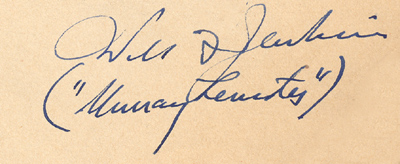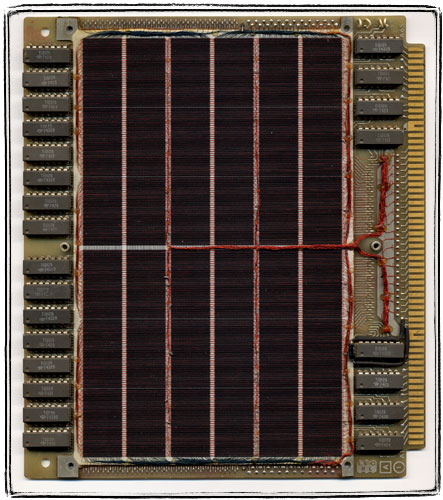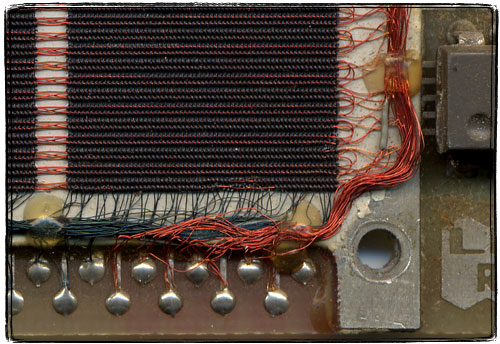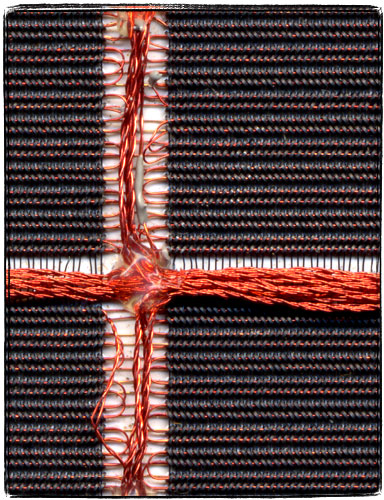
William Fitzgerald Jenkins, better known under his pen name Murray Leinster, was born in Norfolk, Virginia on June 16, 1896 (or so they tell us). I have many reasons not to believe this. He earned his living entirely through freelance writing, except when he worked as a researcher in the War Department during WWI and WWII. In his early literary career he wrote various junk, including “cautionary tails of the perils that could await a young woman, who, in all innocence, failed to insure that she was properly chaperoned at all times” (I am still trying to locate those). In 1919 he witnessed a clock being reset on a building across the street, and rapidly rotating hour and minute arms of that clock gave him an idea. He wrote a story about time travel called “The Runaway Skyscraper”. Since then he wrote mostly science fiction. Good science fiction too, for instance he won a Hugo for one of his stories (becoming the only person who wrote before 20s to win a Hugo).
As I mentioned, he served in two World Wars as a researcher. I bet that most of his work was classified, but I’ve seen mentions that it had something to do with submarines. Crypto, nuclear propulsion – your guess is as good as mine. Seems pretty strange that a freelance writer would also turn out a brilliant technologist, because he was definitely a good engineer : he got two patents for “Front Projection System” (frigging Delphion is charging for access these days, so I can’t really look up what they are) which he later sold to Fairchild Camera.
How does a “cautionary tail” writer becomes a great sci-fi writer, submarine researcher and inventor? I think that he was replaced by a time traveler. He wasn’t alone, he had friends too.
Here is an excerpt from and introduction Will Jenkins wrote for an anthology “Great Stories of Science Fiction” that he edited:
“During the late lamented World War Two, the FBI had occasion to check on me. They decided that I wasn’t subversive, and made due note of the fact. As a consequence, one day I had a telephone call. A voice said pleasantly that it was the FBI calling, and they’d like to talk to me. I searched my conscience hurriedly, and then asked where I should come to talk. The voice said graciously that he’d come to see me. He did. In a hurry. With a companion.
One was a large man with a patient expression, and the other was quite young and looked rather shy. They produced credentials and proved who they were, and I obligingly proved who I was, and then one of them said, “Tell me, have you ever read the Cleve Cartmill story, ‘Deadline’?”
I said I had. The larger FBI man asked interestedly, “What did you think of it?”
“A pretty good story,” I said, “and the science is authentic. Quite accurate.”
Then there was a pause. A rather long pause. Then he sighed, and reluctantly inquired, “Well, what we want to know is: could it be a leak?”
At this point my hair stood up on end and its separate strands tended to crack like whiplashes. Because “Deadline,” by Cleve Cartmill, was a story about an atomic bomb, and this was a year before Hiroshima. The bomb in the story was made of uranium-235, it was to explode when a critical mass was attained, and there were other details. The story described most minutely the temperature of an atom-bomb explosion, the deadly radiation, the lingering aftereffects, the shock-wave, the heat-effect, and all the rest of the phenomena that a year later were observed at Hiroshima and Nagasaki. But I was being asked about it before Hiroshima, and the Manhattan Project was perhaps the most completely hush-hush of all the hush-hush performances of the war.
My copy of this book is of course signed :)

But that is nothing, nothing I tell you, compared to what Will Jenkins himself wrote. You see, he wrote a story called “A Logic Named Joe” in the year 1946. Here is an excerpt
“I’m a maintenance man for the Logics Company. My job is servicing Logics, and I admit modestly that I am pretty good. I was servicing televisions before that guy Carson invented his trick circuit that will select any of ‘steenteen million other circuits—in theory there ain’t no limit—and before the Logics Company hooked it into the Tank-and-Integrator set-up they were usin ’em as business-machine service. They added a vision-screen for speed—an they found out they’d made Logics. They were surprised an pleased. They’re still findin out what Logics will do, but everybody’s got ’em.
…
You know the Logics set-up. You got a Logic in your house. It looks like a vision-receiver used to, only it’s got keys instead of dials and you punch the keys for what you wanna get. It’s hooked in to the Tank, which has the Carson Circuit all fixed up with relays. Say you punch “Station SNAFU” on your Logic. Relays in the Tank take over an’ whatever vision-program SNAFU is telecastin comes on your Logic’s screen. Or you punch “Sally Hancock’s Phone” an the screen blinks an sputters an’ you’re hooked up with the Logic in her house an’ if somebody answers you got a vision-phone connection. But besides that, if you punch for the weather forecast or who won today’s race at Hialeah or who was mistress of the White House durin’ Garfields administration or what is PDQand R sellin for today, that comes on the screen too. The relays in the Tank do it. The Tank is a big buildin foil of all the facts in creation an’ all the recorded telecasts that ever was made—an it’s hooked in with all the other Tanks all over the country—an everything you wanna know or see or hear, you punch for it an you get it. Very convenient. Also it does math for you, an’ keeps books, an acts as consultin’ chemist, physicist, astronomer an’ tea-leaf reader, with a “Advice to the Lovelorn” thrown in. The only thing it won’t do is tell you exactly what your wife meant when she said, “Oh, you think so, do you?” in that peculiar kinda voice. Logics don’t work good on women. Only on things that make sense.
Logics are all right, though. They changed civilization, the highbrows tell us.All on accounta the Carson Circuit. “
Holy Crap! How did the time police miss this guy??
By the way, notice some military humor there. Do you know what SNAFU means?
If you would like to read some of Murray Leinster’s stories, a good place to start is “First Contacts: The Essential Murray Leinster”






